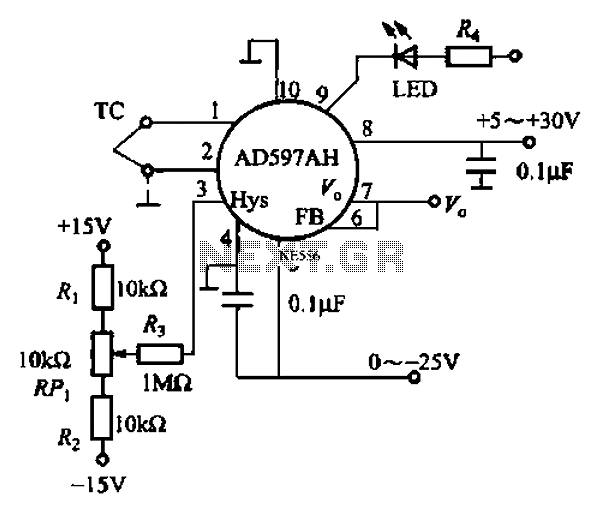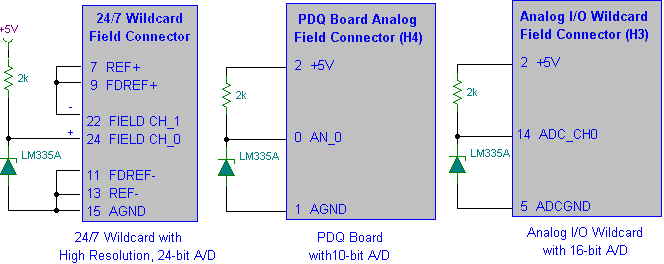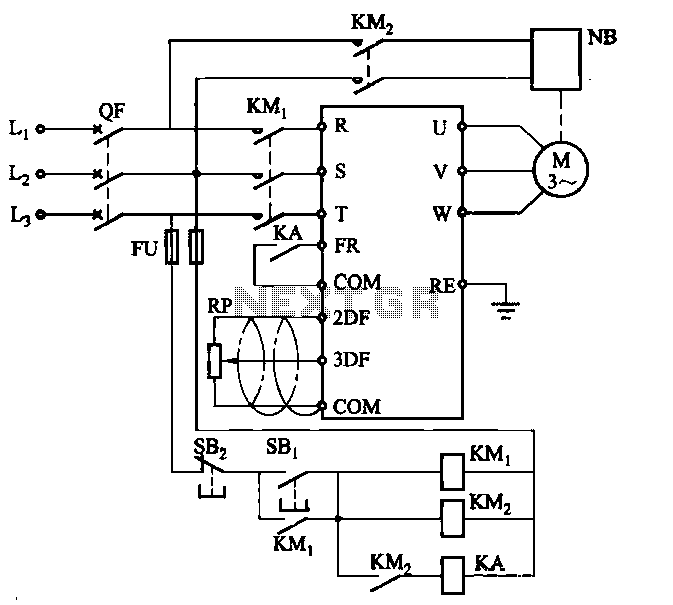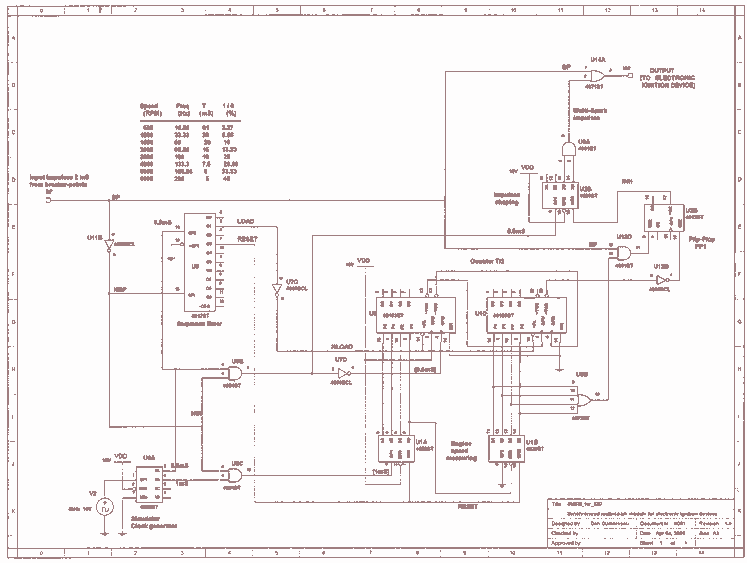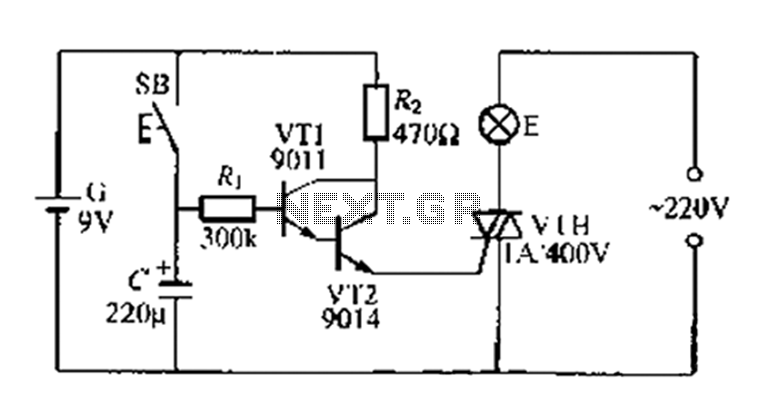
12 to 250V converter circuit diagram electronic project
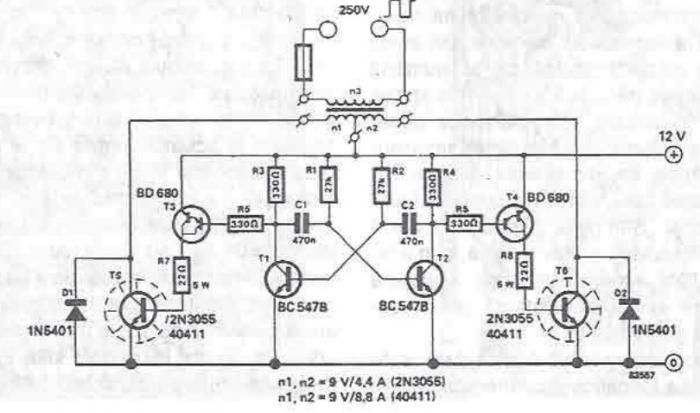
A simple portable converter that transforms 12V to 250V can be constructed using this circuit diagram. This converter is intended for portable use with a 12V car battery. A built astable multivibrator, consisting of transistors T1 and T2, generates a rectangular wave at a frequency of 50 Hz. The push-pull configuration of T1 and T2 drives the output stage. When T1 is activated, it allows current to flow through T3 and T5, engaging the latter transistor, which connects to one half of the 12V secondary winding of transformer Tr. Conversely, when T2 is activated, transistor T6 is coupled to the other half of the network adapter's battery. If RCA 411 transistors are utilized in the output stages, the current through the secondary winding can reach up to 10A, resulting in a power output of 180 watts. If 2N3055 transistors are used, the power output will be approximately 90 watts. The output transistors are driven to saturation and require substantial heat sinks due to their high power dissipation. Although the circuit features a simple design and high efficiency, a disadvantage is the rectangular output voltage, which, in the absence of a regulator, is load-dependent. At small loads, the output voltage can reach 250V AC, making it unsuitable for applications requiring precise control, such as motor speed regulation, light dimmers, televisions, and hi-fi equipment.
This portable 12V to 250V converter circuit is particularly useful for applications that require high voltage from a low voltage source, such as a car battery. The astable multivibrator configuration, utilizing T1 and T2, is critical for generating the necessary square wave signal to drive the transformer. The transformer (Tr) steps up the voltage from the secondary winding, which is crucial for achieving the desired output voltage.
The choice of output transistors significantly impacts the circuit's performance. Using RCA 411 transistors allows for a higher power output of 180 watts, suitable for more demanding applications. In contrast, the 2N3055 transistors, while still effective, limit the output to around 90 watts, which may be sufficient for lighter loads. The push-pull arrangement of the output stage ensures that both halves of the transformer are utilized efficiently, maximizing the power transfer.
Thermal management is a critical consideration in this design. The output transistors must be adequately cooled due to their operation at saturation, which generates substantial heat. Properly sized heat sinks are essential to prevent thermal runaway and ensure reliable operation over extended periods.
The inherent nature of the square wave output presents challenges for certain applications. The lack of a voltage regulator means that the output voltage can vary significantly based on the load connected to the circuit. This variability can lead to performance issues in sensitive electronic devices that require stable voltage levels. Therefore, while the circuit is straightforward and efficient, it is recommended for applications where high voltage is needed without the stringent requirements for voltage regulation.A very simple portable 12 to 250V converter can be designed using this circuit diagram. This 12 to 250V converter is designed for portable use with a 12 V car battery. A built astabil multivibrator T1 and T2 generates a rectangular wave at a frequency of 50 Hz. As T1 and T2 drive alternative exit stage system also works in "push-pull". When T1 lea d by passing a current T3: T5 and that it engages the latter transistor connects to a half battery of 12 V secondary winding of the transformer Tr When T2 network drive, T6 transistor coupled to the battery the other half of the network adapter. If it is used for output stages 40 411 RCA transistors, the current through secondary winding can be up to 10 A, giving a power output of 180 watts.
If you use 2N3055 transistors, power output will be about 90 watts. Since the output transistors are driven to saturation, they have very high mounted radiators. Although circuit is simple construction and has high efficiency disadvantage is rectangular output voltage which, in the absence of a regulator is dependent on task: small loads, the output voltage is 250 V ac (not working properly for the engine speed control, light dimmers, televisions, hi-fi equipment. 🔗 External reference
This portable 12V to 250V converter circuit is particularly useful for applications that require high voltage from a low voltage source, such as a car battery. The astable multivibrator configuration, utilizing T1 and T2, is critical for generating the necessary square wave signal to drive the transformer. The transformer (Tr) steps up the voltage from the secondary winding, which is crucial for achieving the desired output voltage.
The choice of output transistors significantly impacts the circuit's performance. Using RCA 411 transistors allows for a higher power output of 180 watts, suitable for more demanding applications. In contrast, the 2N3055 transistors, while still effective, limit the output to around 90 watts, which may be sufficient for lighter loads. The push-pull arrangement of the output stage ensures that both halves of the transformer are utilized efficiently, maximizing the power transfer.
Thermal management is a critical consideration in this design. The output transistors must be adequately cooled due to their operation at saturation, which generates substantial heat. Properly sized heat sinks are essential to prevent thermal runaway and ensure reliable operation over extended periods.
The inherent nature of the square wave output presents challenges for certain applications. The lack of a voltage regulator means that the output voltage can vary significantly based on the load connected to the circuit. This variability can lead to performance issues in sensitive electronic devices that require stable voltage levels. Therefore, while the circuit is straightforward and efficient, it is recommended for applications where high voltage is needed without the stringent requirements for voltage regulation.A very simple portable 12 to 250V converter can be designed using this circuit diagram. This 12 to 250V converter is designed for portable use with a 12 V car battery. A built astabil multivibrator T1 and T2 generates a rectangular wave at a frequency of 50 Hz. As T1 and T2 drive alternative exit stage system also works in "push-pull". When T1 lea d by passing a current T3: T5 and that it engages the latter transistor connects to a half battery of 12 V secondary winding of the transformer Tr When T2 network drive, T6 transistor coupled to the battery the other half of the network adapter. If it is used for output stages 40 411 RCA transistors, the current through secondary winding can be up to 10 A, giving a power output of 180 watts.
If you use 2N3055 transistors, power output will be about 90 watts. Since the output transistors are driven to saturation, they have very high mounted radiators. Although circuit is simple construction and has high efficiency disadvantage is rectangular output voltage which, in the absence of a regulator is dependent on task: small loads, the output voltage is 250 V ac (not working properly for the engine speed control, light dimmers, televisions, hi-fi equipment. 🔗 External reference
Warning: include(partials/cookie-banner.php): Failed to open stream: Permission denied in /var/www/html/nextgr/view-circuit.php on line 713
Warning: include(): Failed opening 'partials/cookie-banner.php' for inclusion (include_path='.:/usr/share/php') in /var/www/html/nextgr/view-circuit.php on line 713
